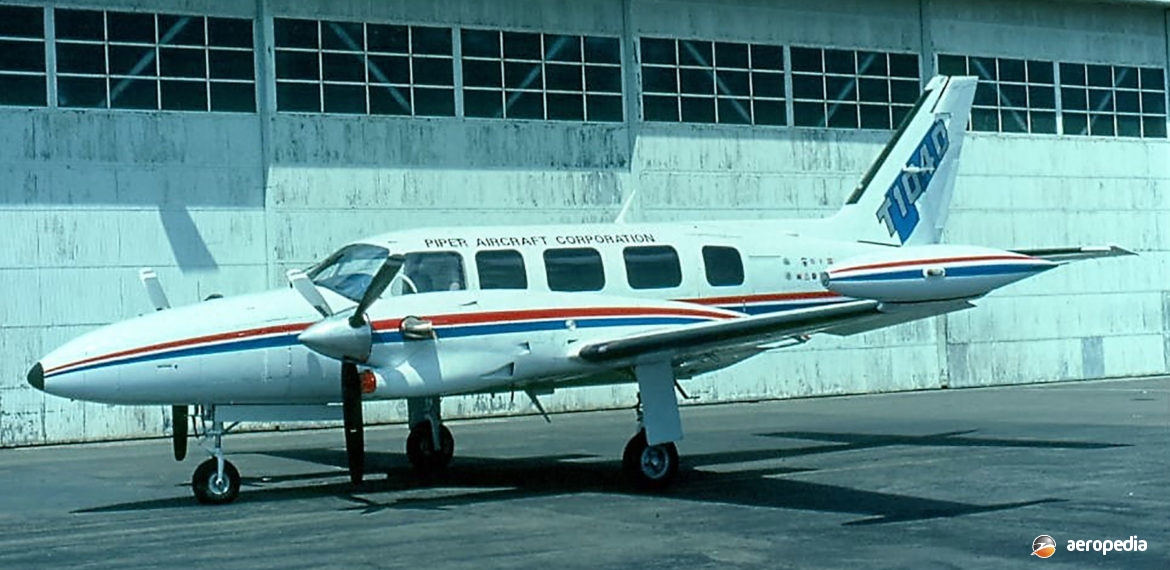Photograph:
Piper T-1040 demonstrator N2605Y at Bankstown, NSW in January 1983 (David C Eyre)
Country of origin:
United States of America
Description:
Commuter airliner and business and executive aircraft
Power Plant:
Two 373 kw (500 shp) Pratt &Whitney (Canada) PT6A-11 turboprops
Specifications:
- Wingspan: 12.52 m (41 ft 1 in)
- Length: 11.81 m (36 ft 8 in)
- Height: 3.89 m (12 ft 9 in)
- Wing area: 21.27 m² (229 sq ft)
- Max speed: 450 km/h (280 mph)
- Max cruising speed at sea level: 376 km/h (234 mph)
- Max cruising speed at 3,355 m (11,000 ft): 440 km/h (274 mph)
- Range with max payload: 834 km (518 miles)
- Range at 3,050 m (10,000 ft) at 440 km/h (274 mph) with 9 passengers and baggage: 1,242 km (772 miles)
- Empty weight: 2,372 kg (5,230 lb)
- Loaded weight: 4,082 kg (9,000 lb)
History:
To meet the needs of commuter airlines which, for some years, used Piper Navajo type aircraft, and which may seek to move up to turbine power in place of the piston-engined type, Piper developed the T-1040, a two-crew and 11 passenger commuter airliner, the prototype of which was flown for the first time on 17 July 1981. This new series of aircraft was produced in two forms, the T-1020 and the T-1040. The basic fuselage of the Navajo Chieftain was mated to the wing, nose and tail of the PA-31T Cheyenne, the T-1040 being turbine powered, whereas the T-1020 was basically the same aircraft with two 261 kw (350 hp) Avco Lycoming T1-/LT10-540-J2BD six-cylinder horizontally-opposed air-cooled engines, being a developed Chieftain.
The T-1040, which has also been known as the PA-31T3 Cheyenne, was not pressurised as it was thought to be unnecessary in view of the design criteria of short-stages of 278 km (172 miles). Baggage capacity was 136 kg (300 lb) in the nose, and 91 kg (201 lb) in the rear of the cabin. Fuel capacity was 1,136 litres (150 Imp gals).
First example of the type seen in this region was a demonstrator, this (N2605Y) being followed by another aircraft ZK-FPL (c/n 31T-8475001 – ex N2464W) which arrived in New Zealand in late November 1984, was registered on 17 December 1984, entering service with New Zealand Forest Products of Auckland. It continued in service but on 24 March 2000, whilst landing at Taupo with a pilot and ten passengers on board on a flight from Palmerston North, it suffered a wheels-up landing when the pilot became pre-occupied with local parachutists. It suffered some damage and had to be repaired. Towards the end of its New Zealand life it was operated by Airwork Holdings Ltd until February 2006 when it was exported to Air Alize in Noumea.

